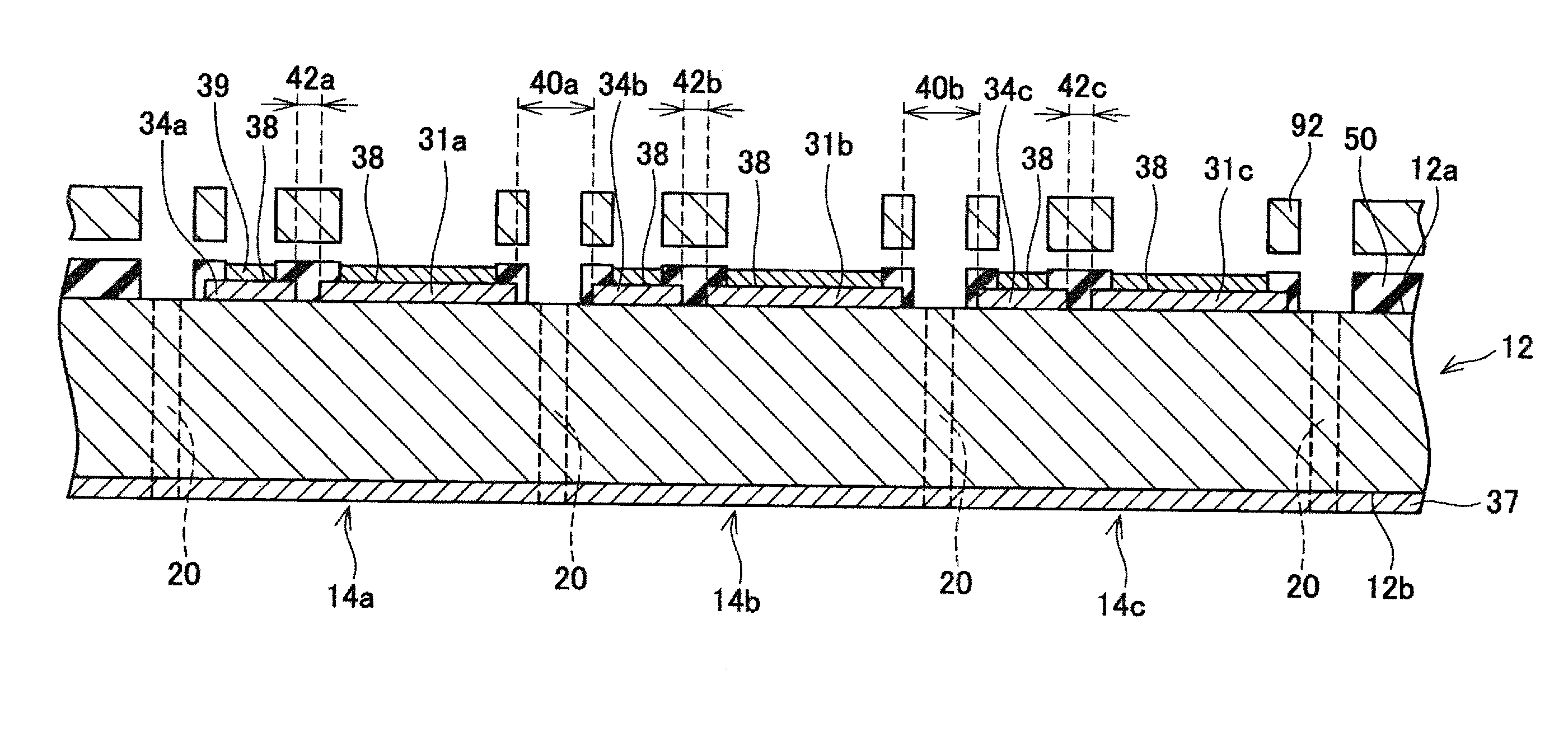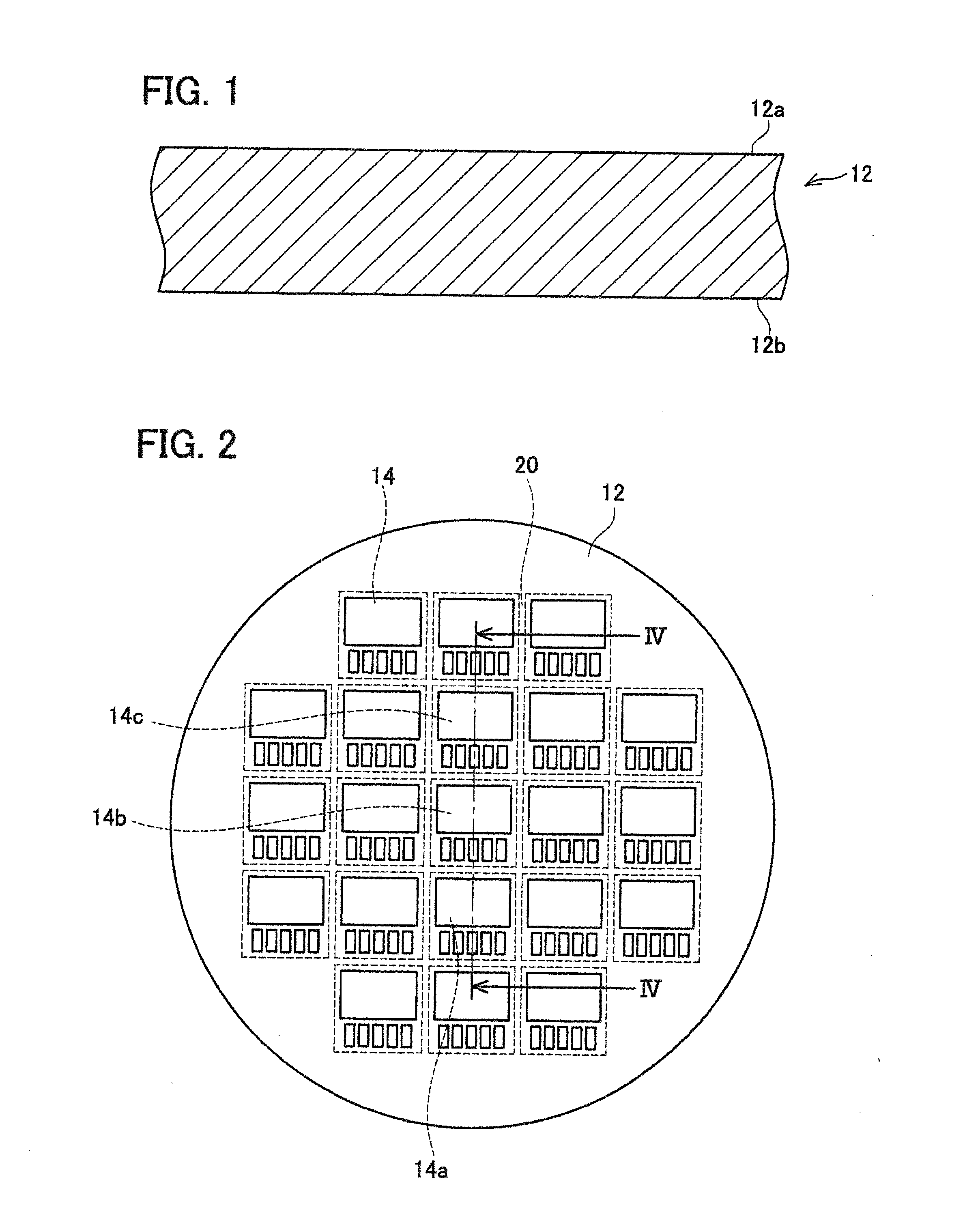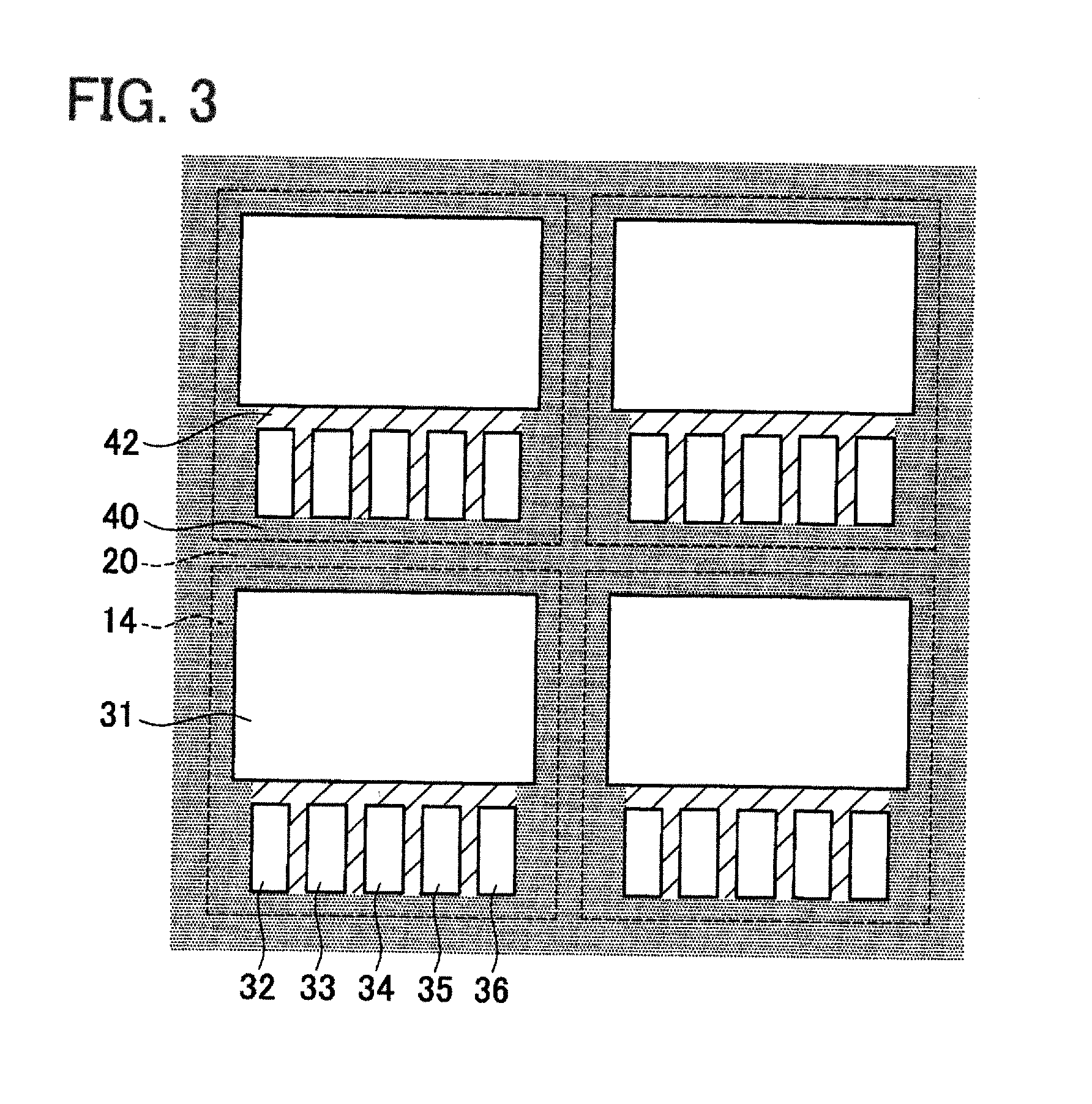Method for manufacturing semiconductor device
- Summary
- Abstract
- Description
- Claims
- Application Information
AI Technical Summary
Benefits of technology
Problems solved by technology
Method used
Image
Examples
first embodiment
[0030]In a manufacturing method of each of embodiments, a semiconductor device is manufactured from a semiconductor wafer 12 depicted in FIG. 1. For example, an n-type SiC wafer is usable as a semiconductor wafer 12.
[0031](Semiconductor Element Formation Step) Plural semiconductor elements 14 are formed in the semiconductor wafer 12 as depicted in FIG. 2 by forming p-type diffusion layers, n-type diffusion layers, electrodes, insulating layers, etc., in the semiconductor wafer 12. In FIG. 2, each region surrounded by a dotted line is the semiconductor element 14, and each narrow region located between the adjacent semiconductor elements 14 is a region 20 (that is, a dicing line) to be cut off in a dicing step performed later. In this embodiment, each of the semiconductor elements 14 is an IGBT. As depicted in FIG. 3, each of the semiconductor elements 14 includes electrodes 31 to 36 formed on a top surface 12a of the semiconductor wafer 12. The electrode 31 being the largest electro...
second embodiment
[0042](Semiconductor Element Formation Step) A method of a second embodiment will be described. A semiconductor element formation step of the second embodiment is executed similarly to the semiconductor element formation step of the first embodiment.
[0043](Insulating Layer Formation Step) At an insulating layer formation step, the insulating layer 50 is formed similarly to that of the insulating layer formation step of the first embodiment. As depicted in FIG. 8, however, the insulating layer 50 is formed so that a width of the insulating layer 50 extending from the boundary portion 40 onto the electrode 31 and a width of the insulating layer 50 extending from the boundary portion 40 onto the electrode 34 are wider than those of the first embodiment. More specifically, the insulating layer 50 is formed so that a distance L1 from an edge 31v of the exposed region 38 of the electrode 31 on a boundary portion 40 side to an edge 31w of the electrode 31 on the boundary portion 40 side is...
third embodiment
[0051]A method of a third embodiment will be described. According to the method of the third embodiment, a semiconductor element formation step, an insulating layer formation step, an inspection step, and an insulating layer removal step are executed similarly to those of the second embodiment.
[0052](Metal Film Growth Step) According to the method of the third embodiment, a metal film growth step is executed after the insulating layer removal step is executed. At the metal film growth step, as depicted in FIG. 12, a metal film 39 (in this embodiment, a nickel film) is grown on the surfaces of the exposed regions 38 of the electrodes 31 to 36 by sputtering and employing a same mask as the mask 92 used at the insulating layer removal step. That is, a metal (that is, nickel) sputtering target is placed above the mask 92 and ions of argon, etc., are caused to collide with the sputtering target and, thereby, the metal film 39 is grown. Notably, a state where the mask 92 is fixed to the s...
PUM
 Login to View More
Login to View More Abstract
Description
Claims
Application Information
 Login to View More
Login to View More - R&D
- Intellectual Property
- Life Sciences
- Materials
- Tech Scout
- Unparalleled Data Quality
- Higher Quality Content
- 60% Fewer Hallucinations
Browse by: Latest US Patents, China's latest patents, Technical Efficacy Thesaurus, Application Domain, Technology Topic, Popular Technical Reports.
© 2025 PatSnap. All rights reserved.Legal|Privacy policy|Modern Slavery Act Transparency Statement|Sitemap|About US| Contact US: help@patsnap.com



